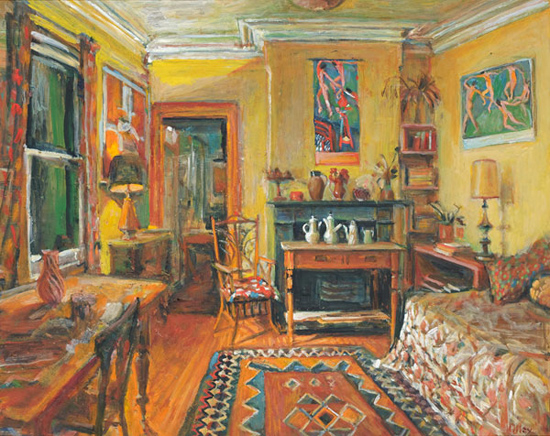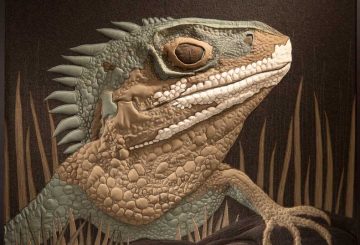From Andrew Frost…
This is a story about art. It’s also a story about politics. Those two things are always intimately connected but never more so than when it comes to Australia’s regional galleries. On a Saturday night in September members of the foundation of the Tweed Regional Gallery & Margaret Olley Art Centre gathered for what was ostensibly the opening of The Yellow Room, a modestly sized but smart collection of paintings, sketches and unfinished works by the late Margaret Olley.
On hand to open the show was the director of the Queensland Art Gallery and Gallery of Modern Art, Chris Saines. Joining him was Philip Bacon, the Brisbane art dealer and friend of the late artist who had generously loaned the works for the show, TRG director Susi Muddiman, and president of the gallery’s foundation Warren Polglase. Despite the mild early spring Murwillumbah evening, foundation members were dressed in evening attire and some of the women wore furs.
This wasn’t just an opening but also a collective pat on the back for the conspicuous success of one of the country’s leading regional galleries. Under the direction of Muddiman, the gallery has consistently proven itself a major player on the state circuit of regional galleries, staging major exhibitions and initiating national touring shows, not to mention managing a steady inflow of donated artworks from the likes of Patrick Corrigan AM, one of the biggest contemporary art collectors in Australia, and the securing of sizeable donations from Mary Fairfax, the latest gift for the construction of artist in residence accommodation slash studio.
Margaret Olley,Yellow Room, evening, 1993. Oil on board. Private collection, Brisbane, courtesy of Philip Bacon Galleries, Brisbane
But the biggest coup for the gallery was to steal away an offer almost too good to be true. The establishment of the Margaret Olley Art Centre, which opened in March this year, almost went to nearby Lismore. When the Lismore council narrowly rejected the offer of a major donation toward the establishment of a gallery, the TRG snapped it up. Since its opening the $4 million centre – which includes a frankly uncanny recreation of two rooms of Olley’s former Sydney studio/residence and the subject of her ‘yellow room’ paintings – the TRG is now firmly on the tourist map. Visitor numbers have easily exceeded the previous yearly figures with close to 76,000 people coming through the doors in just eight months.
Muddiman explained that the locals like to make surprise announcements and the crowd at the event weren’t to be disappointed. First Polglase – local businessman and former local councillor – announced the foundation’s next big ambition: to host international shows – and to do so within two years. Such a thing is certainly possible. Some regional galleries host international touring shows, so there’s really no reason why it couldn’t happen in a tiny northern New South Wales town. The next surprise was the announcement by Bacon that he was donating 143 unfinished works by Olley to the gallery, pieces that Bacon referred to as “ghost pictures”.
Olley’s actual finished paintings are gentle and accessible modernist pieces that echo the work of French painters Pierre Bonnard and Edouard Vuillard, with nods to Gauguin and Matisse. Her paintings are also enormously popular. Buses now make the gallery a regular stop on tours of the region and local businesses, notably a nearby motel, who advertise their coincidental proximity. The visitors come by their dozens; mostly grey-haired retirees who walk determinedly past various exhibitions by contemporary Australian artists in search of the Olley rooms.
The precarious existence for regional galleries is all down to their dependence on the support of various interest groups and the broader community. The TRG was built on land donated by Doug Anthony, the former deputy prime minister and leader of the National Party. Anthony and his wife Margot are still actively involved and they represent the old school conservative politics of farmers and graziers of the region. But like nearby Byron Bay and its hinterland, a younger more left-leaning group are involved in local politics, and the gallery.
Just a day before my visit Barry Longlands, the independent mayor of Tweed Shire and long time gallery supporter, had been unexpectedly ousted by local Murwillumbah café owner and one-time factional ally Dr. Gary Bagnall. Although both are considered to be left wing, Bagnall’s ascension had left some locals concerned about the future of the gallery after his record of voting against various moves to support it.
To keep a place like the Tweed River Gallery open means that everyone has to stay more or less happy. The foundation event was a microcosm of the Australian art world with all its factional interests and concerns for its day-to-day existence playing out on the polished cement floors of the TRG. And as is always the way with these things, Muddiman’s job as TRG director was advertised as council redefines its classification. A few people had applied but Muddiman assured me, she’s wasn’t going anywhere.


